If someone shows signs of a severe allergic reaction (anaphylaxis), which is a medical emergency act fast! This guide covers emergency response for anaphylaxis when an EpiPen isn’t available. If you are performing first aid on someone with anaphylaxis, there are some urgent steps you need to take to ensure that their life is not endangered.
Recognizing Anaphylaxis Symptoms
Look for:
Breathing difficulty (wheezing, tight throat)
Hives, itching, or rash
Swelling (face, lips, tongue)
Dizziness, nausea, or fainting
How to tell if it’s anaphylaxis or another reaction? Anaphylaxis involves multiple symptoms (e.g., swelling plus breathing trouble) and worsens rapidly.
Immediate Steps Without an EpiPen
Call 911 immediately – Anaphylaxis is life-threatening.
Have the person lie down with legs elevated (unless breathing is harder).
Keep them calm and monitor breathing.
Loosen tight clothing around the neck/chest.
If the allergen is known (e.g., bee sting), remove it if safe.
Never wait! Even if symptoms seem mild at first, anaphylactic reaction emergency steps require urgent medical help.
What is Anaphylaxis?
Anaphylaxis is a sudden, severe allergic reaction. Common triggers include foods, insect stings, or medications. It can strike within seconds or take 30+ minutes. Always carry an EpiPen if you have known allergies and wear a medical ID!
How to Care for Someone with Anaphylaxis?
When offering first aid assistance to a person with an unusual rash or inflammation, the most likely culprit is contact with an allergen. You need to immediately assess the patient’s breathing and airway. If you notice the person is in respiratory distress and has difficulty breathing , help them into a comfortable position where they can breathe more easily.
Assess breathing: Help them sit up if struggling to breathe, or lie down with legs raised if dizzy.
Call 911: This is the top priority for allergic reaction no epipen scenarios.
Stay with them: Reassure them and watch for worsening symptoms.
Never offer food/drink – Swelling can cause choking.
Be Prepared for Allergic Reactions!
When to Use an Epinephrine Auto-Injector
Patients that have known extreme allergies to certain substances usually avoid the allergens but should always carry an epinephrine auto-injector with them because not all allergens are easy to avoid. Unfortunately, sometimes people are not aware that they have an extreme allergy to something.

Epinephrine hydrochloride is the drug contained in an epinephrine auto-injector. When injected, the drug immediately slows the anaphylactic shock by reducing the swelling. It does this by constricting the blood vessels. The adrenaline in the drug minimizes the risk of cardiovascular collapse by increasing the heart rate, and it reduces the effects of the allergen by minimizing the body’s release of additional histamines.
If the patient has an epinephrine auto-injector, you can assist them to inject it. If it’s within your scope of practice you can also inject them, but not before first checking that you meet the basic rules of assisting someone with medication. Usually, a person with a known allergy that has an epinephrine auto-injector will also have an allergy identification. Even after the patient with anaphylaxis gets a dose of epinephrine, they will still need to be taken to a medical facility immediately to correct the underlying condition.
Why an EpiPen Matters
Epinephrine (in EpiPens) reverses the symptoms of anaphylactic shock by:
Reducing swelling.
Boosting blood pressure.
Easing breathing.
If available, use it! Learn how to use an EpiPen here.

Aftercare is Non-Negotiable
Even if symptoms improve:
EMS transport is mandatory: A “rebound reaction” can occur hours later.
Bring the used EpiPen: Medics need to see the dose.
Be Prepared!
First aid for anaphylactic shock is crucial to treat anaphylaxis and saves lives. Enroll in our Standard First Aid Course to learn:
How to use an EpiPen.
Anaphylaxis treatment without injection (supportive care).
CPR and airway management. Register for training near you!
Key Takeaways:
Recognize symptoms fast: Swelling + breathing trouble = anaphylaxis.
Call 911 first – Never delay.
Support breathing: Position correctly, stay calm.
Training saves lives: Learn first aid today.
Always seek emergency care, even if symptoms improve!
Register for CPR and First Aid Training


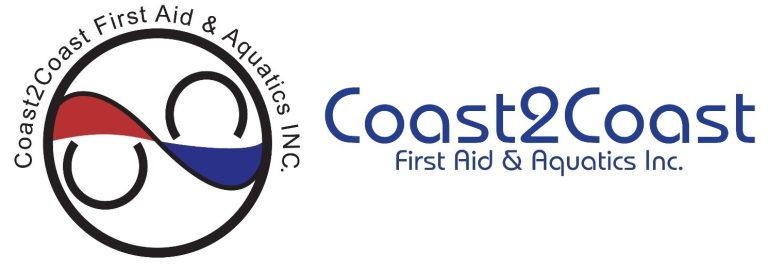
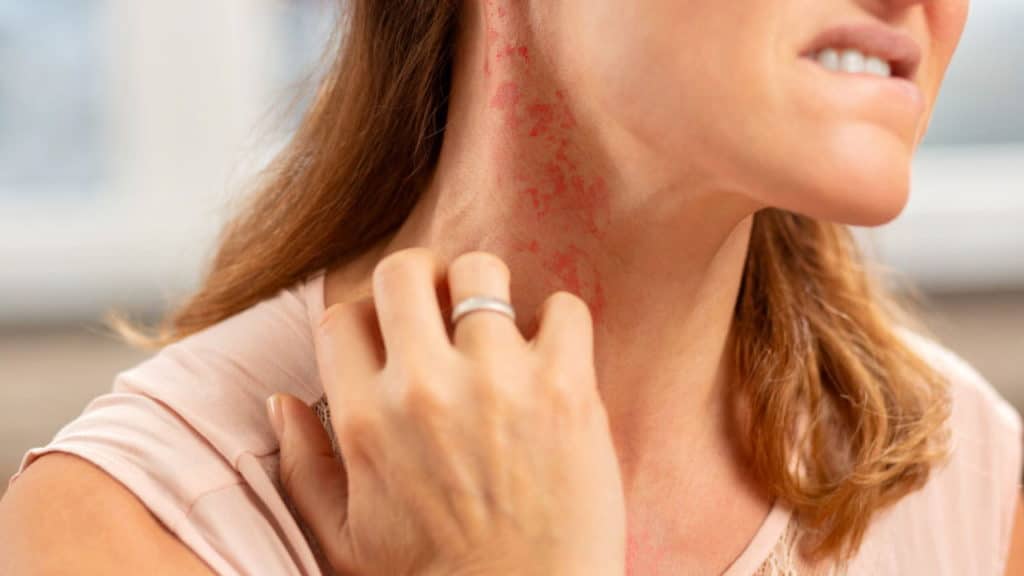

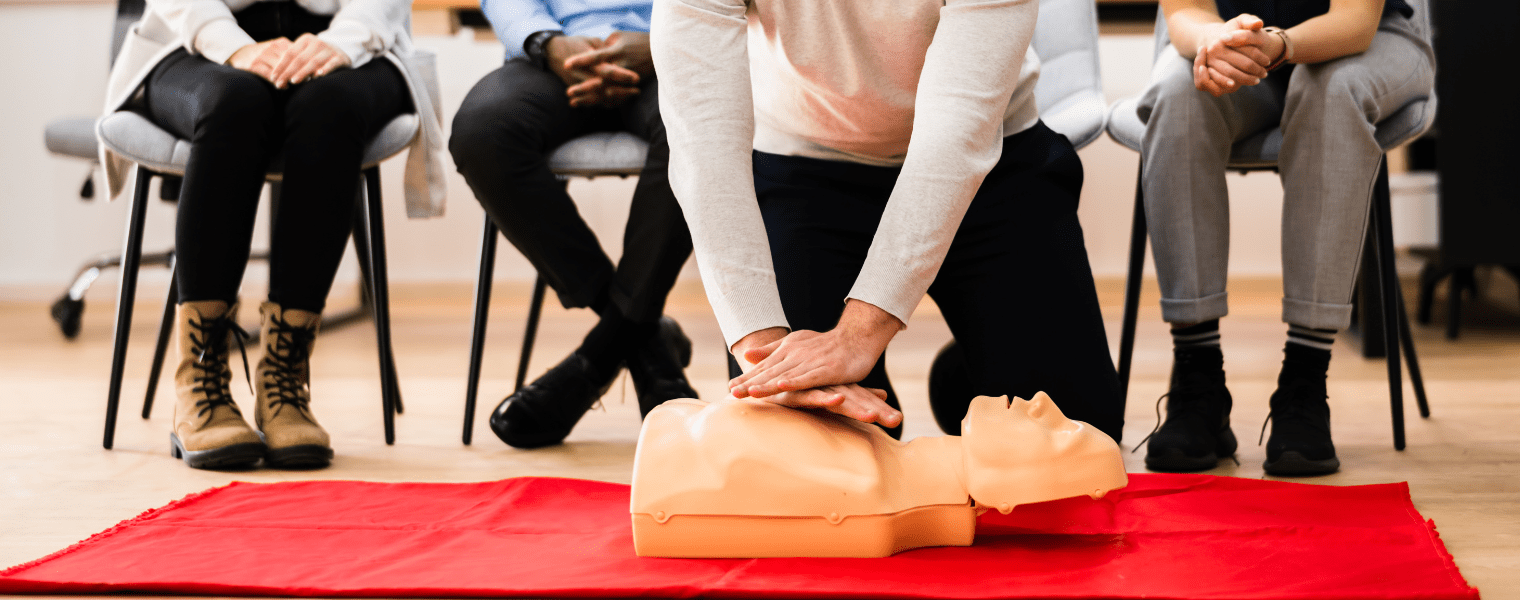




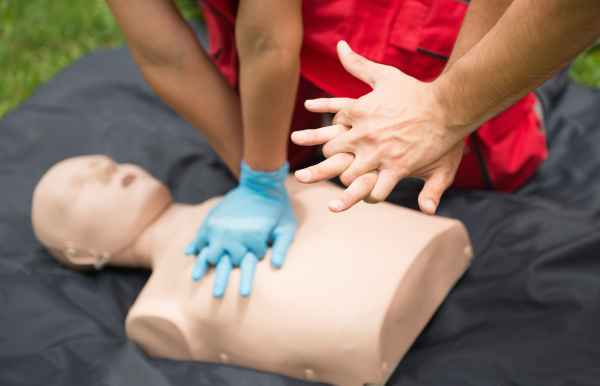


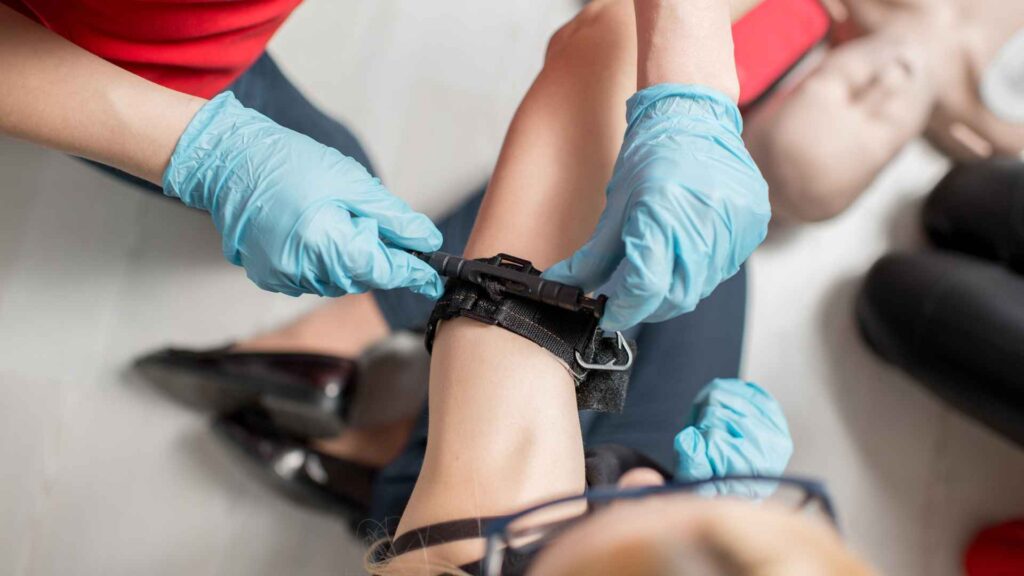


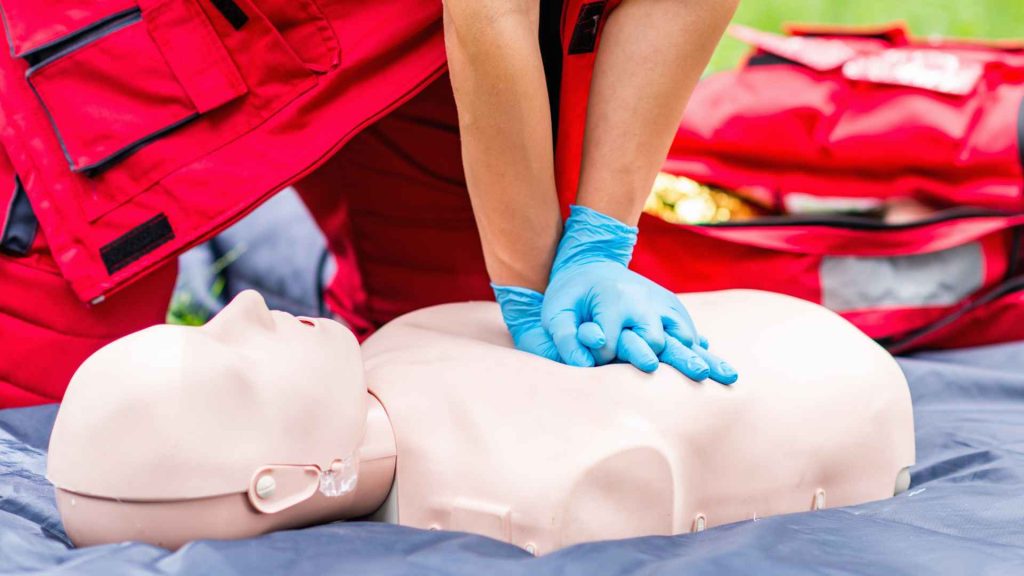

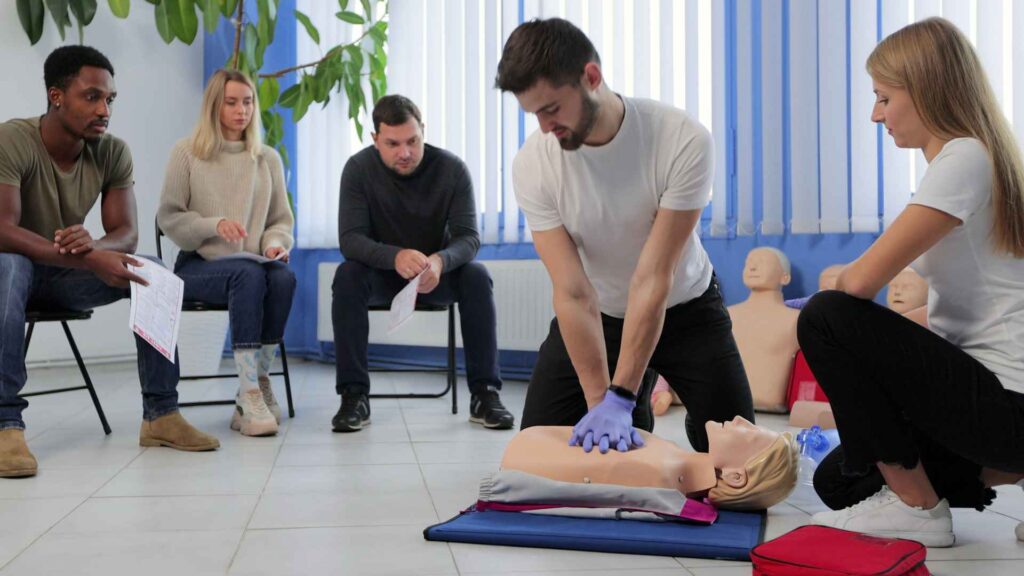
No comment yet, add your voice below!